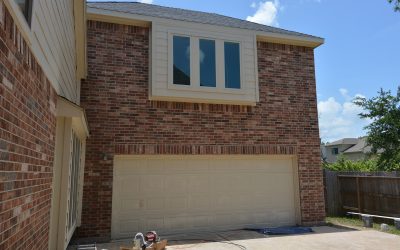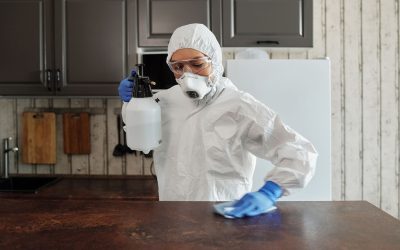Your home remodeling is done. You are just about to kick back and enjoy your new home. However, there is one more important step you have to undertake before you can fully enjoy the remodel. Your health and that of your family depends on it. Cleaning your home after a remodel.
So what’s the big deal you might ask? Well the remodeling process often generates a significant amount of dust, debris, and mess that can linger long after the renovations are complete.
Properly cleaning after remodeling is crucial not only for the aesthetic appeal of your newly renovated space but also for maintaining a healthy and comfortable environment. In this comprehensive guide, we will explore effective strategies for cleaning after remodeling, ensuring that your home is sparkling clean and ready to enjoy.
Proper Dust Management
Dust is an inevitable byproduct of construction and remodeling projects. It has a knack for settling on every surface, hiding in crevices, and even making its way into the air you breathe. Proper dust management is essential during and after remodeling to maintain indoor air quality, minimize health risks, and ensure that your space is truly clean.
Here are some steps you can take even before the job is done.
During Remodeling
Seal Off the Work Area: Before the remodeling work begins, take proactive steps to seal off the work area from the rest of your home. Use plastic sheets and painter’s tape to cover openings such as doors, vents, and entrances to other rooms. This containment strategy will help confine the spread of dust to the construction zone, making the cleaning process more manageable.
Use Zip Walls and Plastic Barriers: If your remodeling project involves extensive work, consider using zip walls and plastic barriers. Zip walls are temporary plastic partitions that can be quickly assembled to create an airtight barrier. These barriers are particularly effective for containing dust and debris in larger renovation spaces.
Regular Cleaning and Vacuuming: Throughout the remodeling process, make it a habit to perform regular cleaning and vacuuming within the work area. Use a vacuum cleaner equipped with a HEPA filter to capture fine dust particles effectively. Regular cleaning not only helps maintain a cleaner environment but also reduces the volume of dust that needs to be cleaned up once the project is complete.
After Remodeling

Ventilation and Air Circulation: After the remodeling work is done, promote ventilation and air circulation to help clear out residual dust. Open windows and doors to facilitate fresh air exchange. Consider using fans to create airflow and aid in the removal of dust particles suspended in the air.
Damp Dusting: Before tackling other cleaning tasks, start by damp dusting all surfaces. Use a microfiber cloth lightly dampened with water or a gentle cleaning solution to trap dust effectively without scattering it. Begin from the highest points in the room, such as ceilings and light fixtures, and work your way down to countertops and floors.
Vacuuming with Precision: Utilize a high-quality vacuum cleaner with appropriate attachments to thoroughly clean your space. Pay close attention to corners, crevices, and hidden spaces where dust tends to accumulate. Ensure that you vacuum not only the floors but also upholstered furniture and drapes, as these can harbor dust particles.
Proper Site Prep and Protection for a Clean Renovation
Preventing excessive dust and debris from spreading during the remodeling process is a proactive step toward reducing the cleanup effort afterward. Proper site preparation and protection strategies help keep your home cleaner throughout the renovation process.
Cover Furniture and Belongings: If possible, move furniture and belongings out of the construction area. For items that cannot be relocated, cover them with plastic sheets or drop cloths to shield them from dust and debris. This proactive measure reduces the need for extensive cleaning afterward.
Floor Protection: Lay down durable floor protection materials such as rosin paper, cardboard, or plastic sheets to shield your floors from heavy foot traffic and potential damage during the renovation. These protective layers can be easily removed, minimizing the amount of debris that accumulates on your floors.
Contain Debris: Set up a designated area for construction debris, such as broken tiles, drywall scraps, and other waste materials. Keeping the debris contained in one spot simplifies the cleanup process once the remodeling is complete.
Post-Construction Cleaning: Dusting, Vacuuming, and More
The final stage of cleaning after remodeling involves thorough post-construction cleaning. This step goes beyond removing visible dust and debris, addressing hidden particles and ensuring a truly clean and sanitized environment.
Dusting High and Low
Start by dusting all surfaces, both high and low. Begin with ceiling corners and light fixtures, using a microfiber duster or cloth. Work your way down to countertops, shelves, and baseboards. Don’t overlook often-forgotten areas such as ceiling fans, vents, and light fixtures.
Vacuuming with Care
Vacuuming plays a crucial role in post-construction cleaning. Use a vacuum cleaner with strong suction and HEPA filters to efficiently capture fine dust particles. Pay close attention to edges, corners, and areas near walls where dust accumulates. Consider using a crevice tool and upholstery attachment for a thorough clean.
Sanitizing and Disinfecting
After dusting and vacuuming, focus on sanitizing and disinfecting surfaces. Use a mild, all-purpose cleaner to wipe down countertops, sinks, faucets, and other frequently touched areas. Pay extra attention to bathrooms and kitchens, where hygiene is paramount. Sanitizing not only eliminates dust and debris but also ensures a healthy living environment.
Cleaning Flooring
Flooring requires special attention after a renovation, as it’s often subject to heavy foot traffic and debris accumulation. The cleaning approach depends on the type of flooring:
- Hardwood and Laminate Flooring: Clean hardwood and laminate floors with a manufacturer-approved cleaner to maintain their finish and shine. Avoid excessive moisture, as it can damage the wood.
- Tile Flooring: Clean tile floors with a mild detergent and warm water. A soft-bristle brush can help remove grime from grout lines.
- Carpeting: Vacuum carpeted areas thoroughly to remove dust and debris. Consider hiring professional carpet cleaners for a deeper, more effective clean.
Conclusion
Cleaning after remodeling is a task that requires careful planning, attention to detail, and effective strategies. By practicing proper dust management, taking proactive measures during the remodeling process, and conducting thorough post-construction cleaning, you can transform your newly renovated space into a clean and inviting environment.












